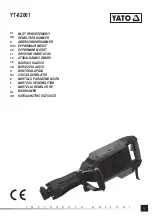
88
CHAPTER 4:
Basic Operation
Model CRX-6.5K Probe Station
4.3.3 Mounting
Samples on the
Sample Holder
The sample must be properly mounted to the sample holder so that the two are in
close thermal contact. If the sample is not properly mounted, the sample can deviate
from the temperature read by the sample stage temperature sensor, causing errors in
measurement data. The temperature error can be significant, especially at cryogenic
temperatures. Before choosing a method to mount your sample, it is important to
understand how to align your sample, and how to minimize the risk for cracking
wafers. Additional sample holders can be ordered so that new samples can be
mounted while others are being probed.
4.3.3.1 Sample Alignment and Position
Remove the sample holder from the sample stage (section 4.3.2) for best access and
ease of alignment. Align the patterning of the wafer parallel to the grooves in the
sample holder. This ensures that the probe arms will intersect the wafer patterns at
right angles.
Whole, 25 mm (1 in), wafers must be centered on the sample holder in order to fit
onto the sample stage, to take advantage of the probe area (see FIGURE 4-1 for an
image of the probe area). Smaller samples should also be centered to allow easy
access by all probes.
Extra care must be taken aligning samples when using GSG microwave probes,
because each probe must land all three points on the sample (see section 4.6.3). After
the sample holder is secured in the probe station, test the alignment to be sure that
all probe points can contact the sample (section 4.6.2 and section 4.6.3). Remember
to lift the probes before evacuating the chamber.
4.3.3.2 Reducing the Risk of Cracking Wafers
Larger, whole wafers pose the most difficult challenge for sample mounting. Good
thermal contact with the sample holder is desirable to prevent thermal gradients
across the wafer but, because of their size, differences in thermal expansion can
cause the wafer to crack when cooled.
There are two common methods for reducing the risk of cracking wafers:
D
Flexible mounting:
flexible mounting methods, like vacuum compatible grease,
allow the sample and sample holder to expand and contract at different
rates. Be careful at very low temperatures because some types of grease
freeze and become solid.
D
Reduce gradients:
cool and warm the system slowly using the setpoint ramp
feature of the temperature controller to reduce temperature gradients
across the sample. Consult the temperature controller manual for details on
the setpoint ramp feature.
4.3.3.3 Temporary Mounting
Temporary mounting is the most common mounting technique among probe station
users. It is easy and fast but still gives reasonable results for most applications. These
are the four most common methods for temporarily mounting samples.
1.
Vacuum compatible (low vapor pressure) grease:
Apiezon N® grease works well to
improve thermal contact at cryogenic temperatures. Apiezon N® grease has a
specified operating range of 1 K to 300 K. At lower temperatures it freezes,
changing its physical and thermal properties. At warmer temperatures (316 K) it
melts and becomes less tacky. To use grease, brush a very light coat on the top
surface of a clean sample holder. You have applied too much grease if the grooves
on the sample holder become filled. Apiezon N® grease is available from
Lake Shore.
2.
Clamping:
a small amount of pressure applied with clamps can significantly
improve thermal contact between the sample and sample holder. Clamping can
Содержание CRX-6.5K
Страница 4: ...Model CRX 6 5K Probe Station ...
Страница 52: ...42 CHAPTER 2 System Overview Model CRX 6 5K Probe Station ...
Страница 92: ...82 CHAPTER 3 Installation and Setup Model CRX 6 5K Probe Station ...
Страница 162: ...152 CHAPTER 6 Maintenance and Troubleshooting Model CRX 6 5K Probe Station ...
Страница 166: ...156 INDEX Model CRX 6 5K Probe Station ...
















































